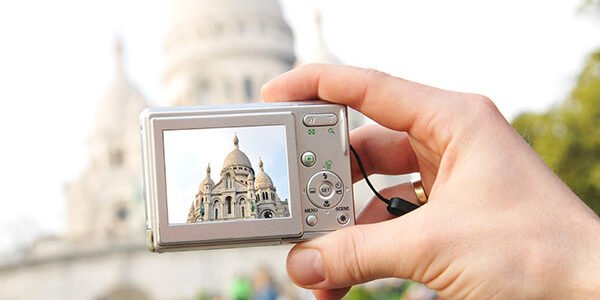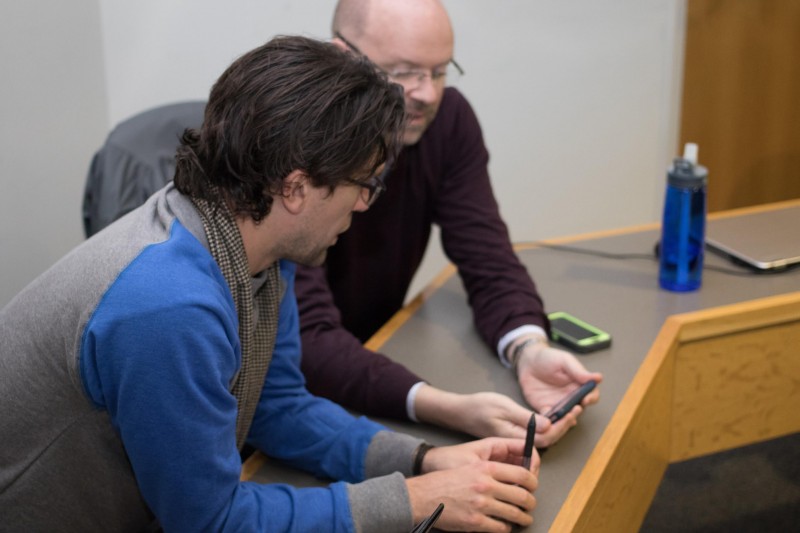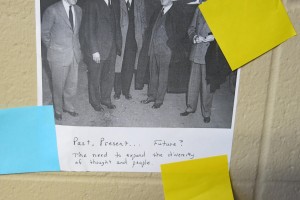Photovoice (PV) is a technique that enables researchers to identify needs and stimulate social change by giving voice to groups and/or issues that may otherwise be voiceless. The acrostic V.O.I.C.E. is sometimes used to describe this research strategy: Voicing Our Individual and Collective Experiences. Frequently, a photovoice project takes place over several weeks with a committed group of participants who work together to identify, photograph, and wrestle with concerns they share. Over the course of several meetings, participants discuss and refine their ideas, select their most compelling photograph(s), and create a caption and brief description for each photo. Their photographs, in turn, are printed and prepared for display. A gallery-like opening event brings together participant-photographers and stakeholders, community leaders, and policymakers in an effort to start conversations that lead to understanding, partnership, and change.
Over the last year I have been experimenting with ways to use photovoice among congregations. The result of these efforts is a 3-week exercise I call the Congregational Self Portraits workshop. During the first session, I introduce to the idea of (1) using mobile devices to take pictures that are, in turn, (2) used as the basis of conversations about the congregation and its community. Participants are given 5 minutes to walk around their meeting place to take 5-10 photos with their cell phone that describe the congregation. I explain that they should consider each photo as a way to capture important characteristics of the congregation. Working in in groups of 2-3, they spend 10-15 minutes describing and discussing these characteristics (Photo 1). Later they the opportunity to report the salient themes of their conversation to the larger group of participants. At the conclusion of the first session, participants are given homework to take a series of 10-15 photographs relevant to the topic being explored. For example, one congregation I worked with explored “where God is at work” in its community; another conducted a needs assessment using the terms “wheat, weeds, and seeds” to represent strengths (wheat), weaknesses/threats (weeds), and opportunities (seeds)—I use wheat, weeds, and seeds in my examples below.
The goal of the second meeting is to encourage productive conversations about the topic(s) under consideration using photographs as a medium for discussion. Participants select three of their own images and share them with a partner or small group, depending on the number of workshop participants. To facilitate these conversations, I use a set of questions adapted from the photovoice literature:
- What do you see in your photograph? Describe who/what is present in the photo.
- What is happening in the photograph? What is the unseen story behind the picture?
- What does the photo tell us about life in this congregation? What can we learn about wheat (strengths), weeds (weaknesses/threats), and/or seeds (opportunities)?
- Why are things this way? Why does this strength (wheat), weakness/threat (weed), or opportunity (seed) exist? How do you explain it?
- How could this photograph educate people in your congregation? What do you want others to see?
- What could/should be done? How does this photo and the story behind it provide opportunities for us to strengthen this congregation?
I tend not to be too dogmatic about everyone using these questions for every photo. They are provided as a way to structure conversations in a fashion other researchers have found to be helpful. Toward the end of the session, I ask discussion partners/groups to share what they learned from each other and I do my best to record their topics and insights on a whiteboard or easel pad. Participants are dismissed with a final homework assignment: (1) select a photograph or take a new one that represents an important topic that relates to a congregational strength (wheat), weakness/threat (weed), or opportunity (seed) and (2) bring a 4 x 6 print of their photograph to the final session.
The goal of the third meeting is to give participants an opportunity to present their ideas visually and verbally to the group. Using a large-format sheet of paper (e.g., legal or 11 X 17 paper), participants use double-faced tape to attach their photograph(s) and spend 5-10 minutes describing their photo. I have used the questions from Week 2 to structure these descriptions, and had success with asking participants to write a title and caption for the photo. If time is in short supply, writing a title and caption may also be done prior to the final meeting. Once complete, these displays are hung on the wall using painters tape. And as work is added to the wall, participants begin to mill about exploring one another’s work.
When it seems that everyone has sufficiently browsed the work on the walls, each participant is invited to identify work that resonates with them using colored stickers or Post-It notes. For example, in a workshop that explores wheat (strengths), weeds (weaknesses/threats), and seeds (opportunities), participants may be given three different colored Post-It notes (one for each category) and asked to affix each to the photo that best represents that theme (Photo 2). Interesting patterns begin to emerge: some images may not garner much attention, a few may receive several ‘votes,’ and some may end up with a mix of different colored sticky notes. During the last minutes of the session, the facilitator’s job is to ask participants about the images that receive the greatest attention and to probe for the importance of each, especially those topics that receive a mix of responses.
After the workshop is complete, the facilitator will do well to collect the participants’ work and write out their recollection of the event (i.e., fieldnotes). From these materials, one is able to create a summary report, one which integrates the visual and verbal data that were collected. A congregation may also want to extend the conversation beyond the participants by displaying some or all of the work generated by the photovoice project.
Photos provided by the author.
Recommended Reading
Dunlop, Sarah and Pete Ward. 2012. “From Obligation to Consumption in Two-and-a-half Hours: A Visual Exploration of the Sacred with Young Polish Migrants.” Journal of Contemporary Religion 27(3):433–451.
Freeman, Darcy and the University of South Carolina. 2011. “Photovoice: From Snapshot to Civic Action.”
Available at https://youtu.be/l4zAdktMUNg.
Powers, Meredith, Darcy Freedman, and Ronald Pitner. 2012. “From Snapshot to Civic Action: A Photovoice Manual.” Columbia, SC: University of South Carolina, College of Social Work. Available here.
Wang, Caroline and Mary Ann Burris. 1997. “Photovoice: Concept, Methodology, and Use for Participatory Needs Assessment. Health Education and Behavior 24(3):369–387.
Wang, Caroline and Yanique A. Redwood-Jones. 2001. “Photovoice Ethics: Perspectives from Flint Photovoice.” Health Education and Behavior 28(5):560–572.



